Joseph Stalin, dictator of the Soviet Union (the U.S.S.R., which includes Russia).
Franklin Roosevelt, president of the U.S.
Winston Churchill, Prime Minister of Great Britain.
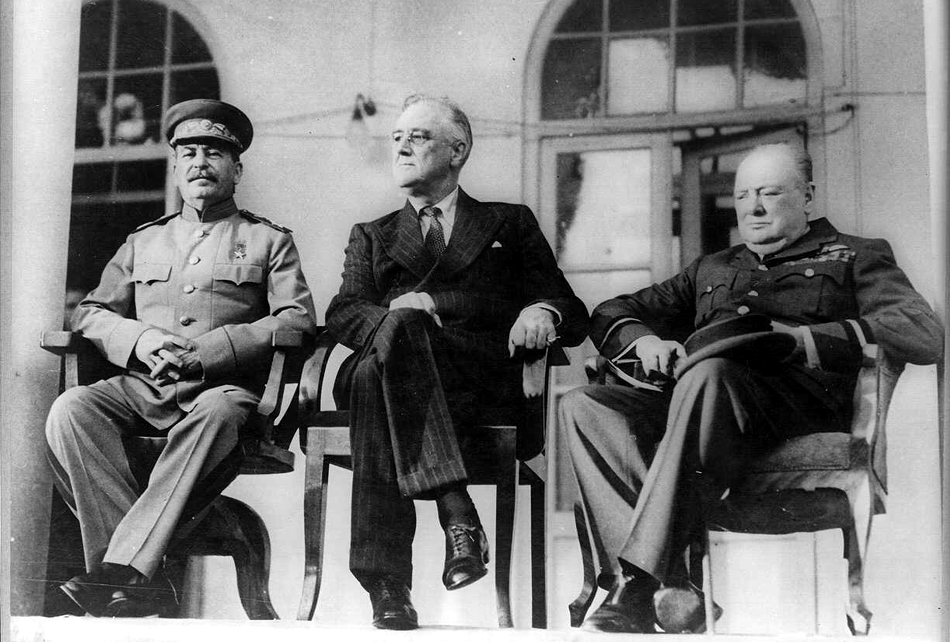
| Allied
Leaders and What They Said Frameworks for America's Past |
Originating Page |

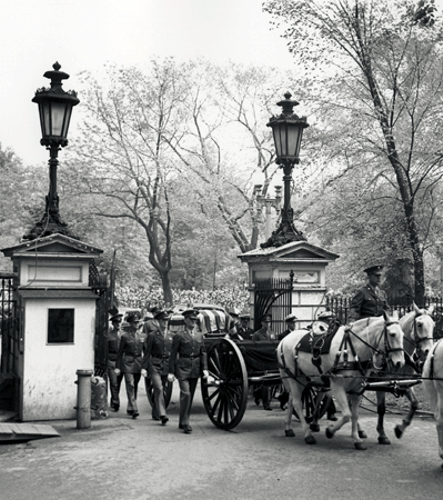 |
|
Harry S. Truman became president when FDR died FDR's vice-president, Harry S. Truman, became president upon FDR's death in April of 1945. Germany surrendered less than a month later, ending the war in Europe. The Japanese, however, continued fighting and showed no interest in surrender. It was President Truman who made the decision to use the atomic bomb to force Japan to surrender in August of 1945. |
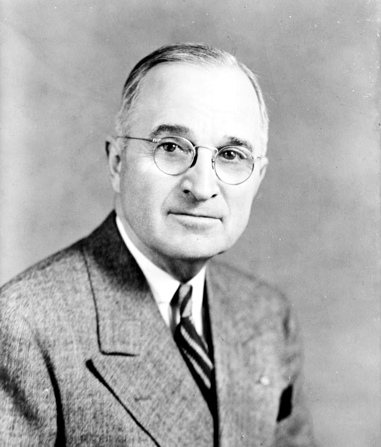 President Harry S. Truman |
|
Winston
Churchill
From his speech to the British Parliament (like our Congress) upon being named Prime Minister in 1940: I say to this House [Parliament] as I said to Ministers [officials] who have joined this government, I have nothing to offer but blood, toil, tears and sweat. We have before us an ordeal of the most grievous kind. We have before us many, many months of struggle and suffering. 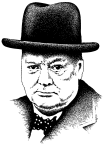 You ask, what is our policy?
You ask, what is our policy? I say it is to wage war by land, sea and air. War with all our might and with all the strength God has given us, and to wage war against a monstrous tyranny never surpassed in the dark and lamentable [sad] catalogue of human crime. That is our policy. You ask, what is our aim? I can answer in one word. It is victory. Victory at all costs - victory in spite of all terrors - victory, however long and hard the road may be, for without victory there is no survival. |
Franklin
D. Roosevelt
President of the United States From his speech to Congress in 1942, one month after the attack at Pearl Harbor: We are fighting today for security and progress and for peace, not only for ourselves, but for all men; not only for one generation, but for all generations.  Our
enemies are guided by a brutal cynicism,
by unholy contempt for the human race. We are inspired by a
faith which goes back through all the years to the first chapter of the
Book of Genesis [in the Bible]: “God created man in His own image.” Our
enemies are guided by a brutal cynicism,
by unholy contempt for the human race. We are inspired by a
faith which goes back through all the years to the first chapter of the
Book of Genesis [in the Bible]: “God created man in His own image.”We on our side are striving to be true to that divine heritage. We are fighting, as our fathers have fought, to uphold the doctrine that all men are equal in the sight of God. Those on the other side are striving to destroy this deep belief and to create a world in their own image, a world of tyranny and cruelty and serfdom. This is the conflict that day and night now pervades [completely fills] our lives. |
|
Looking
deeper: What did FDR mean?
FDR wanted Americans to understand that this war was not mainly about territory or control of the seas for trade. It was a fight to the death between two very different ideas about human life and moral values. In his speech, he defines the war as a struggle over ideas about human life that trace back to ancient Jewish and Christian teachings. He quotes a famous line in the oldest section of the Bible, that "God created man in His own image." He says Americans are trying to defend this concept of human life, while the fascists want to create a world where a human life means almost nothing. The photograph below is an example of the tyranny and cruelty that FDR said was both the method and the goal of fascist leaders like Hitler. It shows German soldiers murdering Jews during the invasion of the Soviet Union in 1942. 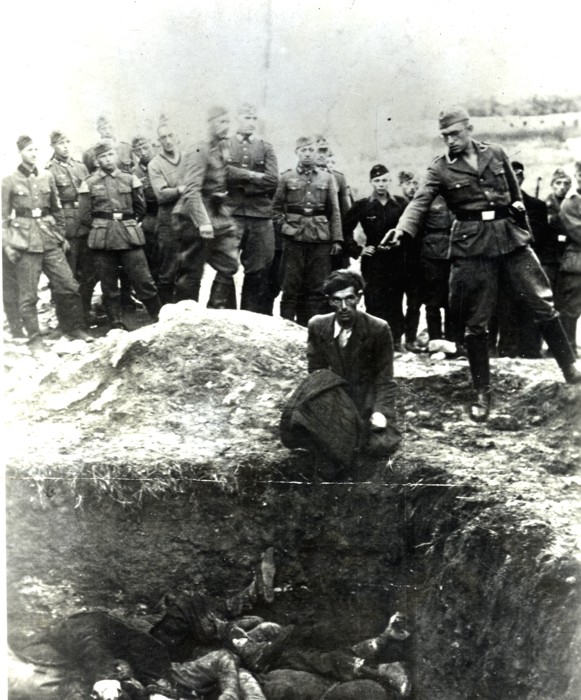 |
|
Copyright Notice
Copyright 2009, 2016 by David Burns. All rights reserved. As a guide to the Virginia Standards of Learning, some pages necessarily include phrases or sentences from that document, which is available online from the Virginia Department of Education. The author's copyright extends to the original text and graphics, unique design and layout, and related material. |